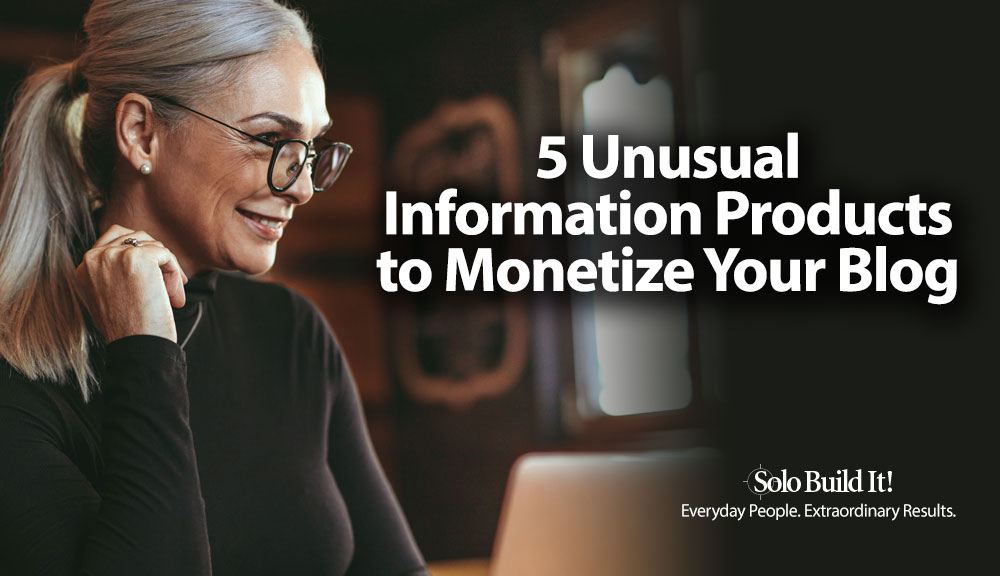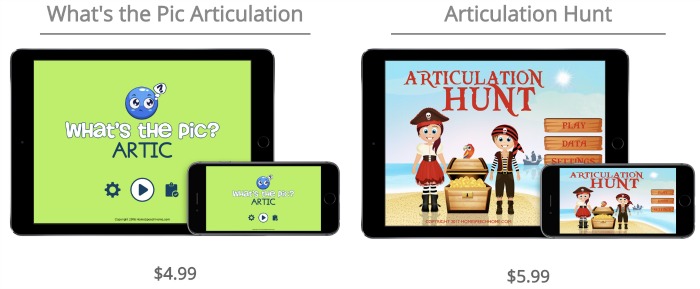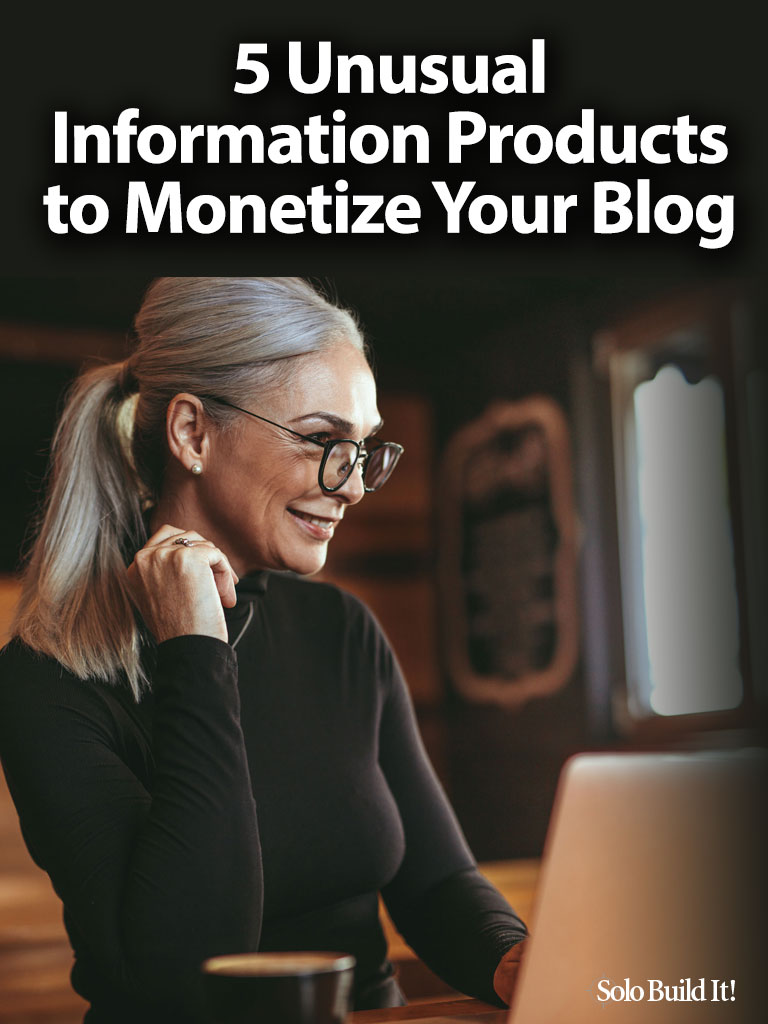
Having an information product that only you control is without doubt the way to diversify income from your website or blog.
If your monetization strategy so far relies on other platforms, creating and selling digital products might seem like a big step from using AdSense or selling affiliate products. But it can also be the start of a truly exciting phase in your online business growth.
Before we look at the five different types of information products, let’s define what they are and which role both you and your customer play in creating them.
What Are Information Products?
 They’re simply products that provide information for which people are searching.
They’re simply products that provide information for which people are searching.
If you have a website that provides information about a specific topic, you have an informational asset. The topic could be any one of myriad examples.
The difference with an information product is that you take the specific knowledge around which you published a website, and use it to create something to sell. Usually, the product is digital, to be viewed online — online courses, for example — or downloaded from your website or another online resource.
The critical part is to create something of value to your potential customers, something that addresses a problem or a struggle they may have, and transforms their life with a solution.
There are two key roles in product creation: you, and your potential customers.
Let’s start where we always start: with your potential customers.
The Role of Customers in Creating Information Products
If you do a Google search for “online business ideas,” you’ll find thousands of results. But to start there is back to front. 
Why? Because one of the biggest mistakes in selling an information product is creating something and then wondering who might like to buy it.
First, you need to know what your potential customers are looking for, as explained in this how to write a product review guide. Not what you think they might be looking for. Not what you’d ideally like them to look for.
So think first about what your audience is looking for. What are they already buying? Which affiliate products sell well, and what need are they satisfying?
What are your potential customers’ frustrations or challenges? How about their goals and dreams? What do they want to achieve over the next, say, 12 months?
And how can you help them solve it? How will your product get them from where they are now to where they want to be? What knowledge do you have that you can structure so as to help them achieve their dreams?
So let’s look at the second key role in product creation: you.
Your Role in Creating Information Products
What’s the most critical characteristic you need to create info products?
Belief in yourself.
If you already have a successful website or blog, you likely have a lot of knowledge in a given subject.
If you don’t, ask yourself what area you’d love to write about, day in, day out. What topic excites you? What passion or lifetime skills do you have that could turn into an information asset — a website or blog — with associated products? Or possibly even a business that generates income for your future retirement.
Do you already have an offline business you’d like to grow, or professional knowledge you’d like to share? Perhaps, like Elizabeth O’Brien, you are or have been a teacher with a passion for your subject.
Take a look at how Elizabeth came to realize she could turn her knowledge into an informational website, and from there, create digital products she knew her audience was searching for.
Wherever you are now, you will — maybe without even realizing it — have a valuable skill, and the expertise to turn that knowledge into a product.
Let’s be blunt, though. Passion and knowledge are important, but you also need time. How much time do you have available currently? Are you willing to invest discretionary time now to create something for your future retirement? Or perhaps you’re already retired and have loads of extra time on your hands. Whatever your situation is, are you ready to commit to using your time to create exceptional content?
Many information products generate passive income. They require time spent creating them, but after that are more or less on auto-pilot. Great for anyone looking to “set and forget.” (Except you should never forget — all products need updating.)
Others require a more hands-on approach.
Which would meet your needs?
Take a look at these five information product ideas and see which one resonates with you.
5 Less Common Types of Information Products
When you think about information product examples, does your mind automatically turn to ebooks and ecourses? They’re a definite possibility, but tend to be what everyone does. Find out more about the seven most common information products, here.
But why not do something a bit different that really makes your niche stand out? Consider some of these less obvious products first.
1. Audio Information Products
Not everyone has the time to sit and read an ebook, but most people have time to listen to an audio recording. Flexible and easy to access, they’re a popular way to spend otherwise lost time while driving, commuting or exercising, for example.
There are a couple of ways to do this: digital products, which can be downloaded instantly from your website or from another host, and physical products.
Audio products would be best suited to you if you already have or plan to buy an informational website or blog. Simply take one of your themed sections — at Solo Build It! we would call it a Tier 2 section — and read each of the associated articles as a separate chapter.
Or, if you already have an ebook, why not offer it in another medium? Take your book and read it out loud. Your audience will likely love to hear your voice speaking to them!
Once done, sell the audio recording as a digital download on your website, using a payment platform like SendOwl.
Alternatively, an ecommerce platform like Shopify enables you to offer both digital and physical products.
Talking of which…
Don’t forget the possibility of physical audio products — CDs. While it’s true that downloads are becoming the most popular way to go, if your niche appeals to older generations, they may be more comfortable with a physical product.
Mandy Blass recognized the potential of audio CDs for her target audience — and ended up being featured on the Today Show! Read her inspirational story, here.

Level of expertise: basic.
Technical skills / equipment: start with what you have: a smartphone or computer may have a good enough sound recorder. Or add an external microphone for a more professional sound.
Alternatively, find a professional on a platform like Fiverr to do the recording for you. Bear in mind, though, that your audience might prefer to hear your voice.
Time: Getting the audio right can take time, and selling an audio product means it should be of a reasonable quality. Again, think about using an external provider if you don’t initially have the confidence to do it yourself.
Potential cost: Making it yourself and selling on your website means your costs will be minimal. Upgrading equipment and using other platforms will inevitably add to cost.
2. Video Information Products
Similar to audio products, but requiring more time, skill and equipment, and not as accessible for potential customers.
Nevertheless, if you have a product or service that would be best shown on video, go for it!
Don’t want to appear on video yourself? No problem! Create a series of slides using a platform such as PowerPoint, Keynote or the free Google Slides. Make sure the information reflects the solution to the issue you’re addressing. Now record the audio “voice over” yourself, talking your audience through the slides and expanding on their content.
Take a look at how quilter Julie Baird has done exactly this in a video explaining how to make “straight quilts” — you’ll need to scroll right down the page to see her video.
A crafting site like Julie’s also lends itself to “over the shoulder” videos, as shown in the example below.

Could you sell one video like this? It’s probably too short. But bundling a series of videos together to make a kind of video book? Absolutely!
Level of expertise: basic to advanced, depending on the type of video you intend to make.
Technical skills / equipment: to create a “slideshow” video, use a free platform such as Loom to record and edit. The more advanced videos, like Suzanne’s, require more professional equipment and expertise.
Time: Even a slideshow takes time to create, add the audio track and edit. A basic video of this kind can take a couple of days from start to finish.
More professional videos will take anything from a week to a month. Don’t attempt this as a beginner!
Potential cost: As with audio products, making it yourself and selling a digital download on your website means your costs will be minimal.
Using a platform like Shopify to sell DVDs adds to cost.
3. Apps as Top Selling Information Products
Mobile use is growing year on year. It’s predicted that the number of mobile users will have risen to around 7 billion worldwide by 2021. And the use of apps has grown incrementally.
I know what you’re going to say: “I don’t have the technical knowledge to make an app.” For most of us, that’s true. But others certainly do. The trick is to find those people.
That’s exactly what Luke Barber did as part of his monetization strategy for the website he created with his wife Holly, “Home Speech Home.”
Luke and Holly initially developed ebooks, which they gave away to drive traffic to their site, later selling them on Amazon.
Three years later, Luke analyzed his data and realized there was a clear potential for creating an app. So he did.

Since then, his apps have developed into a monthly subscription. Although Luke played a part in this, his relationship with his developer was critical.
Watch Luke’s whole story, from start to success, in the interview below.
Level of expertise: high. But if you don’t have the expertise yourself, find a developer who does.
Technical skills / equipment: as above.
Time: creating an app is time-consuming, even if you use a developer. Apps need to be refreshed and the technology kept updated. This product development method is for online business owners who have a well established website.
Potential cost: Luke’s initial cost was around $2,000; updating around $200 per hour. Cost will vary according to the complexity of the app and the expertise of the developer.
4. Membership Sites
Already have a website? Is there one section that’s so popular you could make it available only to a paying audience?
Andrew Smith and his wife Maria have a website about Italy. Realizing that a lot of their website visitors want to visit an “unknown Italy,” they decided to hide part of the site from all non-paying visitors. Linked to a private Facebook group, it’s been a huge success.
Memberships work particularly well with instructional information incorporated in videos or webinars. Learning to play the guitar — or any instrument, learning to cook, teaching yoga… Whatever your niche, consider what knowledge or expertise you have that people will pay for.
Level of expertise: This shouldn’t be a problem: think about topics in which you are an expert and your audience would love to learn.
Technical skills / equipment: basic. A website is a must; a private group can add a “special VIP” feel.
Time: once the membership part of the site is set up, it requires regular updating so your members always have fresh information. And if you have a Facebook group, it will require daily input.
Potential cost: low — mainly your time.
5. Coaching
Our last information product example is an active one — in its basic form it will involve individual sessions, which will be time-consuming. But with imagination, it can also be turned into a source of passive income.
How? Heidi Holvoet loves to coach individuals one-to-one, but realized there was a limit to how far she could scale this (in other words, how many individuals her time allowed her to coach).
So as well as coaching individuals, she began a private group linked as part of a premium package to one of her ebooks.

If you have an offline business as a coach, why not consider creating an online version?
Level of expertise: again, this shouldn’t be a problem. You already have recognized expertise.
Technical skills / equipment: basic. Similar to membership sites, a website is a must to create traffic.
Time: coaching individuals is very time intensive, although it can command a high price. Creating a private group, as Heidi has done, may be the way forward to mixing your coaching services with passive income.
Potential cost: your time.
Ready to Create Your Own Information Products?
You now have a good understanding of
- what information products are
- why it’s so crucial to match your product to what your potential customers want and need
- which role your time, knowledge and self-belief are playing, and
- what type of information products you could create.
A final piece of advice: when it comes to creating information products, good enough is fine, at least at the outset. Make your product good quality, but don’t focus on perfection.
You’ll learn from your customers: listen to their feedback, good or bad, and improve your product over time. Every piece of feedback is an opportunity for development.
Now, go out there and make it happen!

Cath Andrews
Latest posts by Cath Andrews (see all)
- Start a Passion-Based Business and Live Your Dream - February 1, 2023
- What Do You Say When Their Eyes Glaze Over? - December 20, 2021
- How to Monetize Your Email List in 5 Simple Steps - October 26, 2021



